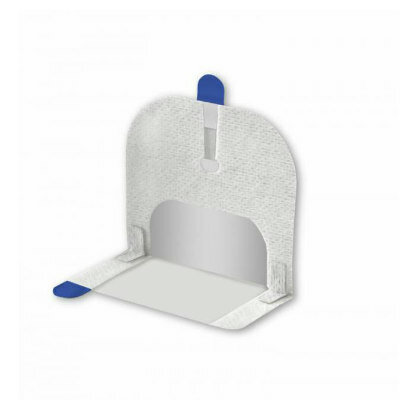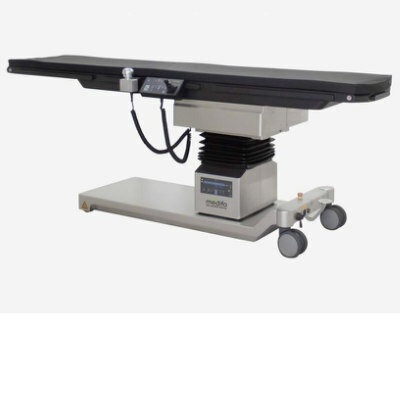Ultralow-Dose Chest CT Outperforms X-Ray in Emergency Department Patients
|
By MedImaging International staff writers Posted on 25 Oct 2023 |

Chest X-rays are a commonly used primary diagnostic tool for various medical conditions, offering benefits like easy access, quick results, and minimal radiation exposure. However, they don't score high in terms of sensitivity and specificity. Chest CT scans offer better diagnostic capabilities but come with drawbacks like higher radiation, more expense, and longer time for reports. Advances in CT technology, however, may be turning the tide. Now, a new study has found that ultralow-dose chest CT has twice the detection rate for main diagnoses compared to chest X-rays in patients who visit the emergency room for non-traumatic issues. The finding suggests that CT scans could be used more commonly as an assessment tool for these patients.
Traditionally, non-contrast-enhanced chest CTs are carried out at two key radiation dose levels: standard-dose and low-dose CT. But the latest improvements in CT technology, such as new detectors and reconstruction algorithms, have dramatically reduced the necessary radiation exposure for chest CTs. It's now nearly equivalent to that of a chest X-ray. As a result, ultralow-dose chest CT is emerging as a viable alternative to standard chest X-rays for patients with low prevalence conditions. Numerous studies have already indicated the effectiveness of using chest CTs with radiation doses up to that of three chest X-rays.
Researchers from the Medical University of Vienna (Vienna, Austria) investigated how ultralow-dose chest CT might offer advantages over chest X-rays for emergency room patients with non-traumatic issues. The study involved 294 participants who visited the emergency room between May and November of 2019. All subjects received both a chest X-ray and an ultralow-dose CT scan. The study was segmented into two groups based on these diagnostic methods. The research showed that ultralow-dose chest CT provided over double the rate of main diagnoses compared to chest X-rays. While this indicates that ultralow-dose CT could serve as a primary imaging method for non-traumatic emergency room patients, more research is essential. This is particularly true considering that CT scans are more expensive and take longer to report, the researchers noted.
"Our findings support the future use of ultralow-dose CT as one of the primary chest-imaging modalities in low-prevalence non-traumatic emergency department patients," wrote the researchers. "Due to higher expected costs and resource requirements, further economic analyses will be necessary to determine the optimal spectrum of indications, rationale, and economic potential of a broader substitution of ultralow-dose CT for chest X-ray as a primary imaging modality of the chest."
Related Links:
Medical University of Vienna
Latest Radiography News
- Novel Breast Imaging System Proves As Effective As Mammography
- AI Assistance Improves Breast-Cancer Screening by Reducing False Positives
- AI Could Boost Clinical Adoption of Chest DDR
- 3D Mammography Almost Halves Breast Cancer Incidence between Two Screening Tests
- AI Model Predicts 5-Year Breast Cancer Risk from Mammograms
- Deep Learning Framework Detects Fractures in X-Ray Images With 99% Accuracy
- Direct AI-Based Medical X-Ray Imaging System a Paradigm-Shift from Conventional DR and CT
- Chest X-Ray AI Solution Automatically Identifies, Categorizes and Highlights Suspicious Areas
- AI Diagnoses Wrist Fractures As Well As Radiologists
- Annual Mammography Beginning At 40 Cuts Breast Cancer Mortality By 42%
- 3D Human GPS Powered By Light Paves Way for Radiation-Free Minimally-Invasive Surgery
- Novel AI Technology to Revolutionize Cancer Detection in Dense Breasts
- AI Solution Provides Radiologists with 'Second Pair' Of Eyes to Detect Breast Cancers
- AI Helps General Radiologists Achieve Specialist-Level Performance in Interpreting Mammograms
- Novel Imaging Technique Could Transform Breast Cancer Detection
- Computer Program Combines AI and Heat-Imaging Technology for Early Breast Cancer Detection
Channels
Radiography
view channel
Novel Breast Imaging System Proves As Effective As Mammography
Breast cancer remains the most frequently diagnosed cancer among women. It is projected that one in eight women will be diagnosed with breast cancer during her lifetime, and one in 42 women who turn 50... Read more
AI Assistance Improves Breast-Cancer Screening by Reducing False Positives
Radiologists typically detect one case of cancer for every 200 mammograms reviewed. However, these evaluations often result in false positives, leading to unnecessary patient recalls for additional testing,... Read moreMRI
view channel
PET/MRI Improves Diagnostic Accuracy for Prostate Cancer Patients
The Prostate Imaging Reporting and Data System (PI-RADS) is a five-point scale to assess potential prostate cancer in MR images. PI-RADS category 3 which offers an unclear suggestion of clinically significant... Read more
Next Generation MR-Guided Focused Ultrasound Ushers In Future of Incisionless Neurosurgery
Essential tremor, often called familial, idiopathic, or benign tremor, leads to uncontrollable shaking that significantly affects a person’s life. When traditional medications do not alleviate symptoms,... Read more
Two-Part MRI Scan Detects Prostate Cancer More Quickly without Compromising Diagnostic Quality
Prostate cancer ranks as the most prevalent cancer among men. Over the last decade, the introduction of MRI scans has significantly transformed the diagnosis process, marking the most substantial advancement... Read moreUltrasound
view channel
Deep Learning Advances Super-Resolution Ultrasound Imaging
Ultrasound localization microscopy (ULM) is an advanced imaging technique that offers high-resolution visualization of microvascular structures. It employs microbubbles, FDA-approved contrast agents, injected... Read more
Novel Ultrasound-Launched Targeted Nanoparticle Eliminates Biofilm and Bacterial Infection
Biofilms, formed by bacteria aggregating into dense communities for protection against harsh environmental conditions, are a significant contributor to various infectious diseases. Biofilms frequently... Read moreNuclear Medicine
view channel
New SPECT/CT Technique Could Change Imaging Practices and Increase Patient Access
The development of lead-212 (212Pb)-PSMA–based targeted alpha therapy (TAT) is garnering significant interest in treating patients with metastatic castration-resistant prostate cancer. The imaging of 212Pb,... Read moreNew Radiotheranostic System Detects and Treats Ovarian Cancer Noninvasively
Ovarian cancer is the most lethal gynecological cancer, with less than a 30% five-year survival rate for those diagnosed in late stages. Despite surgery and platinum-based chemotherapy being the standard... Read more
AI System Automatically and Reliably Detects Cardiac Amyloidosis Using Scintigraphy Imaging
Cardiac amyloidosis, a condition characterized by the buildup of abnormal protein deposits (amyloids) in the heart muscle, severely affects heart function and can lead to heart failure or death without... Read moreImaging IT
view channel
New Google Cloud Medical Imaging Suite Makes Imaging Healthcare Data More Accessible
Medical imaging is a critical tool used to diagnose patients, and there are billions of medical images scanned globally each year. Imaging data accounts for about 90% of all healthcare data1 and, until... Read more
Global AI in Medical Diagnostics Market to Be Driven by Demand for Image Recognition in Radiology
The global artificial intelligence (AI) in medical diagnostics market is expanding with early disease detection being one of its key applications and image recognition becoming a compelling consumer proposition... Read moreIndustry News
view channel
Bayer and Google Partner on New AI Product for Radiologists
Medical imaging data comprises around 90% of all healthcare data, and it is a highly complex and rich clinical data modality and serves as a vital tool for diagnosing patients. Each year, billions of medical... Read more




















